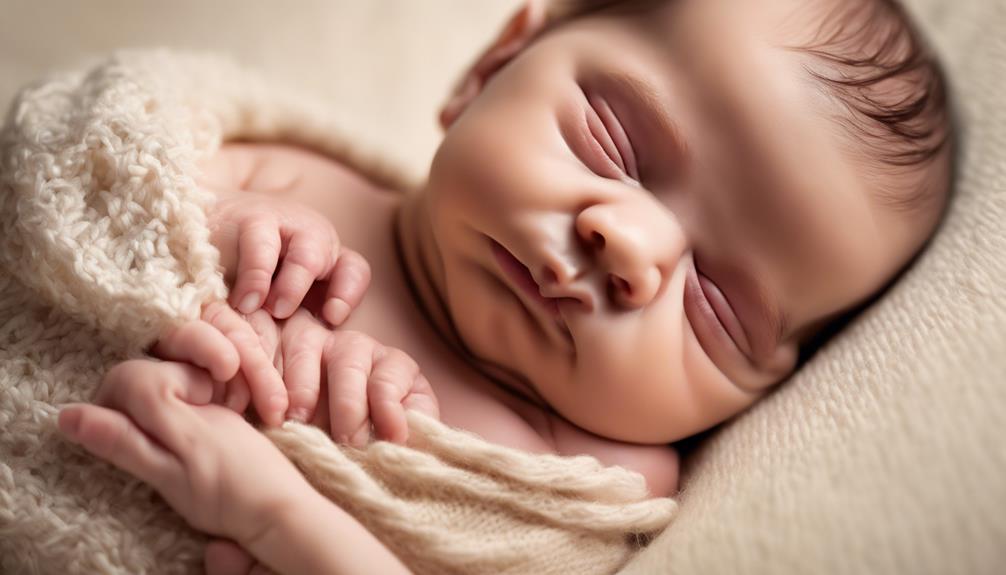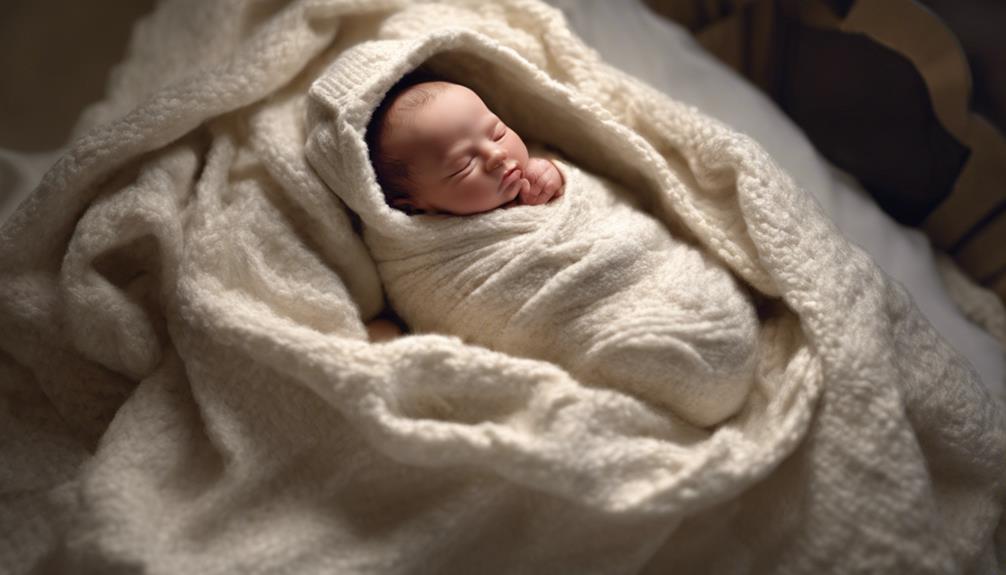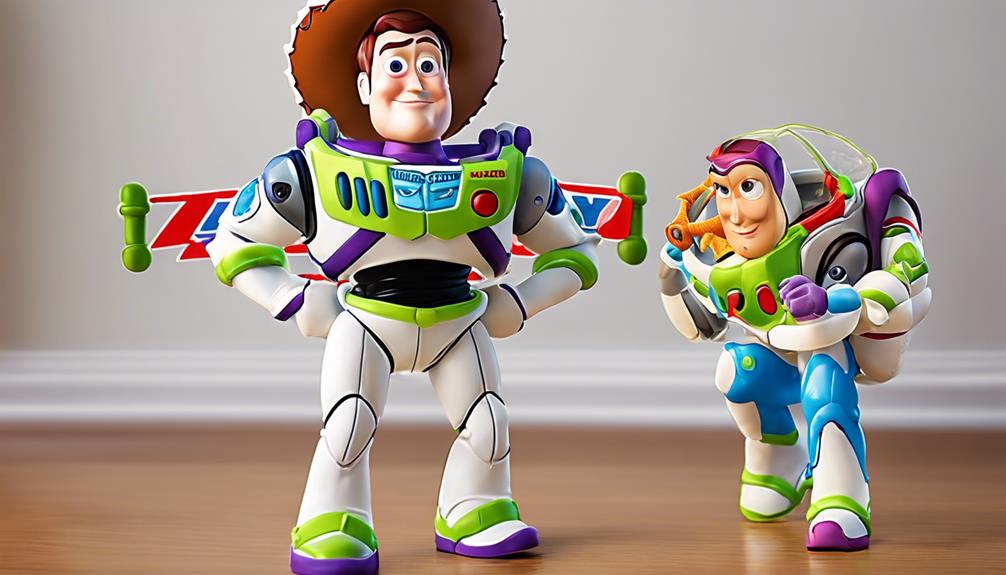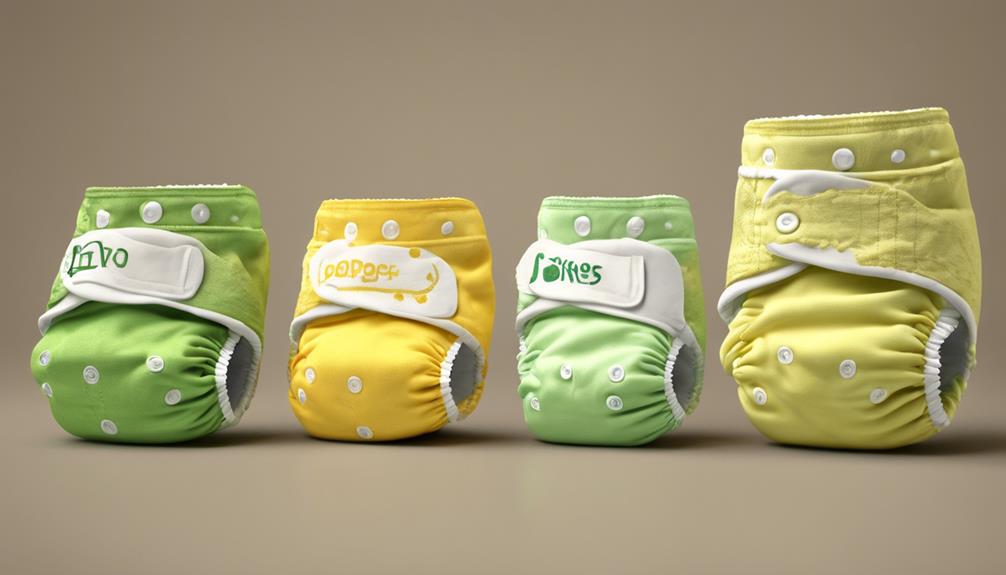When caring for our uncircumcised baby, we focus on proper hygiene practices and avoid forcefully retracting the foreskin to prevent problems and discomfort.
Understanding the importance of gentle cleaning methods and seeking guidance from healthcare providers is essential in ensuring our baby's well-being.
As we navigate this essential care journey, staying informed and proactive in our approach will help us provide the best possible care for our child's delicate needs.
Key Takeaways
- Gently clean with warm water and mild soap, avoiding forceful retraction.
- Regularly inspect for signs of infection like redness, swelling, or discharge.
- Change diapers frequently, keep the area clean and dry, and use diaper cream.
- Consult a healthcare provider for guidance on long-term foreskin care.
Proper Cleaning Techniques
When caring for your uncircumcised newborn, it's essential to adopt gentle cleaning techniques to maintain peak hygiene and prevent complications. The foreskin, a protective layer of skin covering the head of the penis, requires careful attention. During baths, use warm water and mild soap to cleanse the area, making sure not to forcefully retract the foreskin. Pulling it back forcefully can cause pain, tearing, and potential infections.
After cleaning, thoroughly dry the genital area to prevent any moisture-related issues. Regularly inspect for redness, swelling, or discharge, as these could be signs of a problem that needs medical attention. Remember, seeking guidance from a healthcare provider on proper cleaning techniques and care for your uncircumcised baby's penis is vital for their well-being.
Bath Time Care
To guarantee proper hygiene for your uncircumcised newborn during bath time, gently cleanse the external genital area with warm water and mild soap. When cleaning your child, remember to be gentle to avoid causing any discomfort or injuries.
Here are some essential tips for bath time care:
- Use Mild Soap: Opt for a gentle, fragrance-free soap to prevent irritation in the genital area.
- Avoid Forceful Retraction: Never forcefully retract the foreskin as this can cause tears and bleeding.
- Thoroughly Rinse: Make sure you rinse the area thoroughly to remove all soap residues that could lead to irritation.
Proper cleaning during bath time is vital for your newborn's health. Remember, if you have any concerns or questions about cleaning your child's uncircumcised genital area, don't hesitate to consult with your pediatrician for guidance tailored to your baby's needs.
Diaper Change Best Practices
For best care of your newborn, make sure you change their diaper frequently to prevent irritation and maintain hygiene. When it comes to diaper changes for your uncircumcised baby boy, it's vital to keep the diaper area clean and dry. The American Academy of Pediatrics recommends using mild soap and water or fragrance-free baby wipes to clean the area gently. Remember to pat the skin dry thoroughly before putting on a fresh diaper to prevent moisture build-up, which can lead to diaper rash.
Applying a thin layer of diaper cream can help protect your baby's delicate skin from irritation and diaper rash. During each diaper change, take a moment to inspect the uncircumcised penis for any signs of redness or irritation. If you notice any concerning symptoms, such as persistent redness or discharge, it's important to seek medical advice promptly. By following these diaper change best practices, you can help keep your baby comfortable and free from diaper-related skin issues.
Recognizing Signs of Infection
To safeguard the well-being of your uncircumcised newborn, it's important to be able to recognize signs of infection in the genital area promptly. It's necessary to stay vigilant and attentive to any changes that may indicate a potential issue. Here are some key signs to watch for:
- Redness: Check for any unusual redness in the genital area, as this can be a sign of irritation or infection.
- Swelling: Swelling in the foreskin or surrounding tissues could indicate an underlying problem that needs attention.
- Discharge: Any discharge, especially if it's pus-like or foul-smelling, should raise concerns about a possible infection.
If you notice any of these signs or if your newborn experiences fever, pain, or persistent swelling, it's important to seek immediate medical assistance.
In cases of paraphimosis, a condition where the foreskin can't return to its original position, prompt action is necessary as it constitutes a medical emergency. Don't hesitate to contact your healthcare provider if you have any worries about your baby's genital health.
Hygiene Tips for Long-Term Care
When caring for your uncircumcised newborn in the long term, maintaining proper hygiene practices is essential to prevent potential issues. Foreskin separation typically occurs between 3-5 years of age, making cleaning easier.
It's important to teach your son how to wash under the foreskin regularly as part of good hygiene habits. Avoid premature retraction, as it can lead to pain, tearing, and bleeding.
If you have any concerns about your child's foreskin development, don't hesitate to consult a healthcare provider for guidance. Once advised by the pediatrician, gently clean under the foreskin with warm, soapy water to keep it hygienic.
These simple hygiene tips are critical for your newborn's long-term care and overall health. Proper care now can prevent future complications and safeguard your child's well-being as they grow.
Frequently Asked Questions
When Do You Start Pulling Back Baby Foreskin to Clean?
We start gently pulling back the baby foreskin for cleaning once natural separation occurs, typically around ages 3 to 5. Premature retraction can cause pain and complications, so it's crucial to wait for the right time.
At What Age Should a Child's Foreskin Pull Back?
It's important to be curious about when a child's foreskin should pull back. It's a natural process that typically happens around 3 to 5 years. Patience is key. Rushing it can lead to discomfort and complications.
Do You Have to Pull Back Skin on Uncircumcised Baby?
We should not retract the foreskin on an uncircumcised baby. Doing so can cause harm and discomfort. It's important to let the foreskin naturally separate from the glans over time to guarantee the baby's genital health.
What Is Proper Hygiene for Uncircumcised Boys?
Wondering about proper hygiene for uncircumcised boys? First, only clean what's visible. Use warm water and mild soap, avoiding harsh chemicals. Check for redness or swelling regularly, and change diapers often for cleanliness.
Conclusion
As parents, it's important to stay informed and proactive in caring for our uncircumcised newborns. By following proper hygiene practices and seeking guidance when needed, we can guarantee their well-being and comfort.
Remember, gentle care and attention to detail are key in promoting a healthy environment for our little ones.
Stay informed, be proactive, and trust in your ability to provide the best care for your precious baby.









